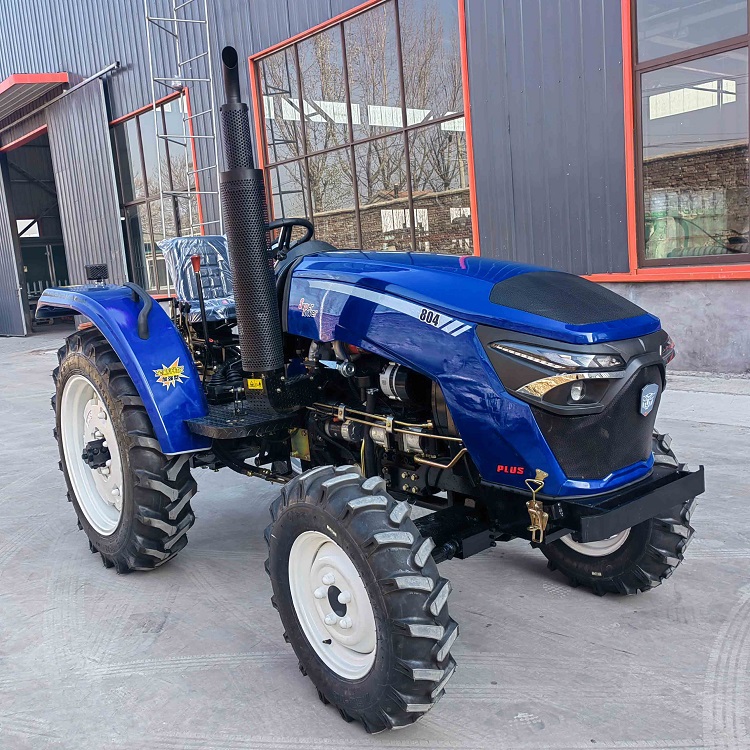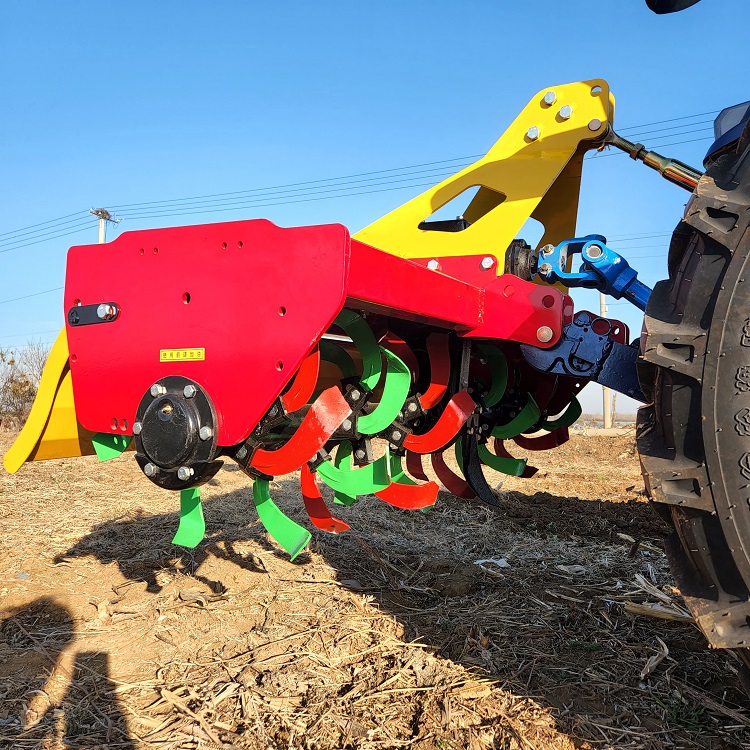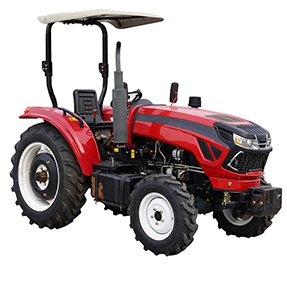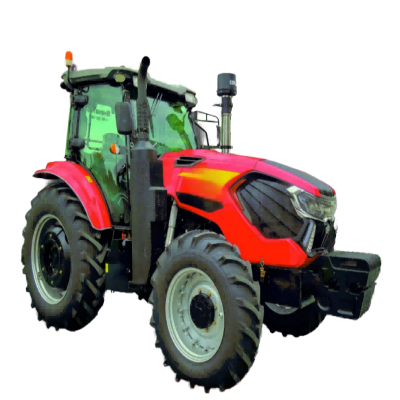Sixteen inspection tasks before a tractor goes into field operation
Before a tractor is put into operation, a thorough inspection is essential to ensure safety and optimal performance. This inspection covers multiple aspects, including the exterior, fluids, tires, transmission system, hydraulic system, electrical system, braking system, steering system, suspension system, engine, cooling system, exhaust system, cabin, tools, and safety equipment.
1. Exterior Inspection
The first step is a detailed exterior inspection. Carefully examine the tractor's body for any visible damage, cracks, or rust. Pay special attention to the condition of lighting equipment, such as headlights, turn signals, and brake lights, to ensure they are fully functional and safe for nighttime operations. Additionally, check the mudguards, protective covers, and other components to ensure they are securely fastened, preventing any potential hazards during operation.
2. Fluid Inspection
Fluid inspection is a critical step to ensure the tractor operates smoothly. Check the levels of engine oil, hydraulic oil, transmission oil, brake fluid, and coolant to ensure they are within the normal range. If any fluids are low, replenish them promptly. Also, assess the quality of the fluids; if they appear cloudy or contain impurities, replace them immediately. Inspect the oil filters to determine if they need replacement, ensuring the fluid pathways remain unobstructed.

3. Tire Inspection
Tires are the only components of the tractor that come into contact with the ground, and their condition directly affects the stability and safety of operations. Check whether the tire pressure meets the required standards, as both overinflation and underinflation can impact the tractor's handling and tire lifespan. Additionally, inspect the tread depth of the tires; if the tread is severely worn, replace the tires promptly. Also, check for any cracks, bulges, or other damage to ensure the tires' integrity.
4. Transmission System Inspection
The transmission system is the core component of the tractor's power transfer and must be ensured to function properly. Inspect transmission belts, chains, gears, and other parts for wear, looseness, or breakage. If any issues are found, replace or tighten them promptly. Also, check the lubrication of the drive shaft to ensure it is well-lubricated and reduce wear.
5. Hydraulic System Inspection
The hydraulic system is a critical part of the tractor, enabling functions such as lifting and steering. Check hydraulic hoses for leaks, cracks, or aging. Inspect hydraulic cylinders, pumps, and other components to ensure they are functioning correctly and that the hydraulic system maintains stable pressure. If any abnormalities are detected, repair or replace the relevant parts promptly.
6. Electrical System Inspection
The proper functioning of the electrical system is essential for the tractor's startup, lighting, and signal transmission. Check whether the battery is sufficiently charged and ensure the battery terminals are securely connected to prevent poor contact. Inspect electrical equipment such as the generator and starter motor to ensure they are working properly. Also, check fuses, relays, and other electrical components to ensure the reliability of the electrical system.
7. Braking System Inspection
The braking system is a crucial safeguard for the tractor's safe operation. Inspect the wear condition of brake pads and brake discs; if they are severely worn, replace them promptly. Check brake hoses for leaks or aging to ensure proper hydraulic transmission in the braking system. Also, verify that the handbrake is flexible and reliable to prevent the tractor from rolling when parked.

8. Steering System Inspection
The flexibility of the steering system directly affects the tractor's maneuverability. Check steering rods, knuckles, and other components for looseness or wear. Inspect steering hoses for leaks or aging to ensure proper hydraulic transmission in the steering system. Also, verify that the steering wheel's free play is within the normal range to ensure accurate steering.
9. Suspension System Inspection
The suspension system is crucial for the tractor's stability and comfort. Inspect suspension springs, shock absorbers, and other components for damage or aging. Check the suspension system's connecting parts to ensure they are securely fastened, preventing loosening or detachment during operation. Additionally, inspect the lubrication of the suspension system to ensure it is well-lubricated and reduce wear.
10. Engine Inspection
The engine is the heart of the tractor and must be ensured to operate properly. Check whether the engine starts smoothly and idles stably. Inspect the exhaust color; if black or blue smoke is observed, promptly identify and address the cause. Also, check engine belts, fans, and other components to ensure proper cooling and lubrication.
11. Cooling System Inspection
The cooling system is essential for preventing engine overheating. Check the coolant level and quality; if the coolant is insufficient or deteriorated, replenish or replace it promptly. Inspect the radiator, water pump, and other components to ensure the cooling system's efficiency. Additionally, check the cooling system's hoses for leaks or blockages to ensure proper coolant circulation.
12. Exhaust System Inspection
The proper functioning of the exhaust system is crucial for reducing engine noise and emissions. Inspect the exhaust pipe for leaks or blockages. Check the muffler to ensure it is intact and prevents excessive noise. Also, verify that the exhaust system's connecting parts are securely fastened to prevent loosening or detachment during operation.
13. Cabin Inspection
The cabin is the operator's working environment and must ensure comfort and safety. Check the flexibility and reliability of operational components such as the seat, steering wheel, and pedals. Inspect the cabin's sealing to prevent dust and noise from entering. Additionally, check the cabin's air conditioning, heating, and other equipment to ensure they are functioning properly, providing a comfortable working environment.

14. Tools and Safety Equipment Inspection
Tools and safety equipment are essential auxiliary items for tractor operations. Check whether the onboard tools, such as wrenches, screwdrivers, and jacks, are complete. Inspect the condition of safety equipment, including fire extinguishers, first aid kits, and reflective vests. Also, ensure that warning signs, such as caution triangles, are in place to guarantee safety during operations.
15. Trial Operation Inspection
After completing the above inspections, a trial operation is a crucial step. Start the tractor and check whether the engine runs smoothly and if there are any abnormal noises. Verify the functionality of all gauges, such as the water temperature gauge, oil pressure gauge, and tachometer. Test the flexibility and reliability of operational components, including the steering wheel, brakes, and throttle. Additionally, check the performance of the hydraulic system, transmission system, and other components to ensure the tractor's overall functionality.
16. Recording and Reporting
Finally, document the inspection results in detail, including any issues identified, actions taken, and parts replaced. This not only helps track the tractor's maintenance history but also provides valuable references for future inspections and repairs. If major issues are discovered, report them to supervisors or maintenance personnel promptly to ensure timely resolution.
Conclusion
A comprehensive pre-operation inspection is a vital safeguard for ensuring smooth and safe tractor operations. As an experienced operator, I understand the importance of each inspection step. Only by meticulously checking every component can we ensure the tractor performs optimally, guaranteeing both efficiency and safety during operations. Through this article, I hope to help more operators master the pre-operation inspection process, collectively improving operational standards and ensuring the smooth progress of agricultural production.
Author: My farm
Source: Agricultural Machinery News Network



